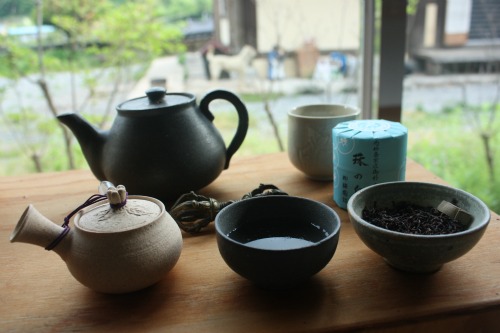순천 야생 작설차
How often do you drink tea? Tea has been one of the most popular beverages in human history. Tea is well known as an effective beverage. The main ingredient of tea contains a chemical called ‘Catechin’, which gets rid of free oxygen radicals that cause various diseases such as cancer, heart disease and various allergies. So drinking lots of tea could help prevent diseases. It is also good for one’s diet. It removes fat in blood, lowers cholesterol and enhances the effect of enzymes in breaking down fat.

Korea is not well known for tea compared to China and Japan. Fortunately, at the foot of Mt. Jogye located in Suncheon City, Jeollanamdo, Master Shin Gwang-soo, cultivates tea leaves called Jakseol from our native tea trees. The name Jakseol comes from the appearance of leaves which look like the tongue of a sparrow and it stands for young sprouts of tea trees. Jaksolcha, is made from tea leaves that are collected from end of April to the beginning of May is a kind of traditional Korean tea. To make the tea, collecting tea sprouts should come first of course. Then the sprouts go through the repeating process of roasting and drying in a hot spot 9 times. The smell that goes through your nose during the roasting is so fresh and calm that you would love to keep the smell around you.
According to Master Shin, however, to make great tea, the five senses of a tea maker play the main role. He said, “The five senses of tea maker are important. The maker must feel the temperature of a pot and the moisture of leaves with his skin, smell the sense of the tea while it is roasted, see the color of the leaves and lastly hear the sound in the middle of the process. If one of the five senses does not work properly, good tea cannot be provided from him.” When you drink green tea, you use your five senses as well. First, you see the bright color of the tea. Then you smell and feel the tea before drinking it. Finally, you get to taste the tea and hear the sound. “Most of the tea that people are drinking in Korea is made from an enhanced strain of Japan’s tea tree. It looks the same, but when you compare the root it shows the obvious difference. Enhanced strained trees have 30~50cm long roots our trees have roots 3m long. Also, the lifespan of enhanced strain tree is usually 30 years but our native tee trees are eternal. Native trees provide fewer amounts of tea leaves but the quality is guaranteed,” he added.
He tried to introduce Korean wild green tea, Jakseolcha to the world, but it was not easy. The main reason was that Korea is not even registered as a tea producing country with the UN and this fact often became a barrier when it comes to spreading the traditional tea to the world. Master Shin’s tea is exported to Japan and Europe but he is not satisfied with the results. “Our tea has all the best conditions to be a world class tea. However, Korean people are not really interested on our native trees. It is so sad that we are not even aware of the value of our own.” His son who is working to keep our native tea trees and to keep producing great tea said, “My role is to make people drink our traditional tea in their daily lives. It still has a long way to go, but I am going to find the way.”
People usually drink tea but not many people are interested to find out more about what they are drinking. Try to be aware of what you are drinking and as long as it is tea, why don’t you drink our own? Now it is time for us to put more attention to our tradition and make a move to keep the value.
By Kim Hae-in, Tribune Reporter
김해인 기자
haein6772@googlemail.com

